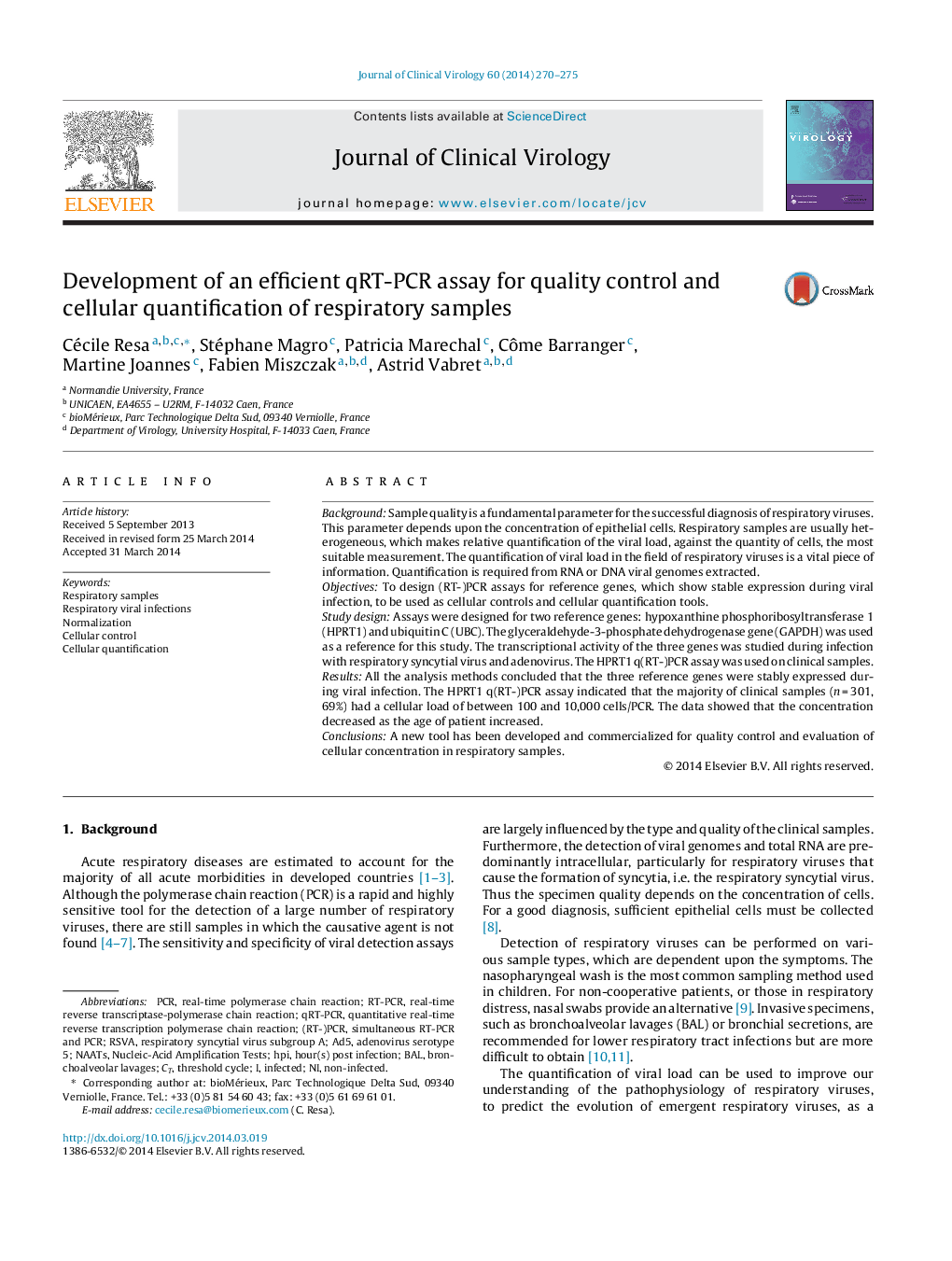| Article ID | Journal | Published Year | Pages | File Type |
|---|---|---|---|---|
| 3368941 | Journal of Clinical Virology | 2014 | 6 Pages |
•Reference genes GAPDH, HPRT1 and UBC are stably expressed during viral infection.•(RT-)PCR assays developed can be used as cellular controls in respiratory samples.•HPRT1 q(RT-)PCR allows to make an accurate estimation of the cellular concentration.•Majority of nasal swabs contains between 100 and 10,000 cells/PCR.•The developed test can be used to normalize the viral load of respiratory samples.
BackgroundSample quality is a fundamental parameter for the successful diagnosis of respiratory viruses. This parameter depends upon the concentration of epithelial cells. Respiratory samples are usually heterogeneous, which makes relative quantification of the viral load, against the quantity of cells, the most suitable measurement. The quantification of viral load in the field of respiratory viruses is a vital piece of information. Quantification is required from RNA or DNA viral genomes extracted.ObjectivesTo design (RT-)PCR assays for reference genes, which show stable expression during viral infection, to be used as cellular controls and cellular quantification tools.Study designAssays were designed for two reference genes: hypoxanthine phosphoribosyltransferase 1 (HPRT1) and ubiquitin C (UBC). The glyceraldehyde-3-phosphate dehydrogenase gene (GAPDH) was used as a reference for this study. The transcriptional activity of the three genes was studied during infection with respiratory syncytial virus and adenovirus. The HPRT1 q(RT-)PCR assay was used on clinical samples.ResultsAll the analysis methods concluded that the three reference genes were stably expressed during viral infection. The HPRT1 q(RT-)PCR assay indicated that the majority of clinical samples (n = 301, 69%) had a cellular load of between 100 and 10,000 cells/PCR. The data showed that the concentration decreased as the age of patient increased.ConclusionsA new tool has been developed and commercialized for quality control and evaluation of cellular concentration in respiratory samples.
